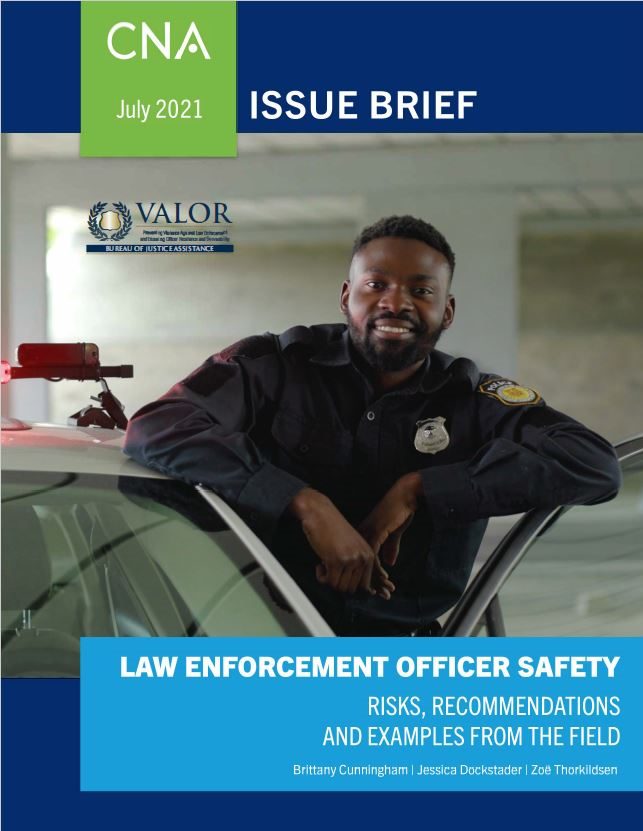Officer safety is of critical importance in an era of increased risk for law enforcement officers. Law enforcement officers (hereafter, “officers”) respond to some of the most unpredictable, traumatic, and violent encounters of any profession.1 Although much of an officer’s workday entails repetitive interactions, some calls for service or self-initiated interactions by police officers may escalate into dangerous encounters. According to the Federal Bureau of Investigation’s (FBI’s) Law Enforcement Officers Killed and Assaulted (LEOKA) Program, between 2010 and 2018, an average of 51 officers died in a felonious killing per year. LEOKA defines a felonious killing as an “incident type in which the willful and intentional actions of an offender result in the fatal injury of an officer who is performing his or her official duties.” Regardless of how officer line-of-duty deaths, assaults, or injuries occur, the consequences are tragic and complex, affecting officers’
work and home life.2 Just as de-escalation, defusing, and crisis intervention tactics are paramount today, so is officer safety.
This brief provides an accessible resource for law enforcement agencies, line officers, and their stakeholders (e.g., policy-makers, training instructors) to inform the development of targeted training, policies, and practices to promote officer safety while in the line of duty. Specifically, this brief offers the following:
- a summary of officer safety risks related to calls for services, traffic-related encounters, ambushes, and blue-on-blue encounters;
- recommendations for promoting officer safety related to tactical preparedness; and
- real-world policing initiatives that serve as examples of practices in the field to improve officer safety.
This document contains the best opinion of CNA at the time of issue.
This project was supported by Cooperative Agreement Number BJA-2018-DP-BX-K015 awarded by the Bureau of Justice Assistance, U.S. Department of Justice. The opinions contained herein are those of the author(s) and do not necessarily represent the official position or policies of the U.S. Department of Justice. References to specific agencies, companies, products, or services should not be considered an endorsement by the author(s) or the U.S. Department of Justice. Rather, the references are illustrations to supplement discussion of the issues.
The Internet references cited in this publication were valid as of the date of this publication.
Given that URLs and websites are in constant flux, neither the author(s) nor BJA can vouch for their current validity.
This issue brief is a product created through a partnership between BJA and CNA’s Center for Justice Research and Innovation. The Using Analytics to Improve Officer Safety project examines granular incident data from 2015–2019 from several local law enforcement agencies to identify incident characteristics (characteristics specific to the incident and related to officer tactical response) associated with officer assaults, injuries, and line-of-duty deaths. Using machine learning techniques, CNA is producing a risk assessment model to link incident characteristics with officer safety outcomes. This work also entails working with participating agencies to identify best practices and recommendations to reduce risks to officer safety in the line of duty.
Details
- Pages: 24
- Document Number: IIM-2021-U-030314
- Publication Date: 7/30/2021
